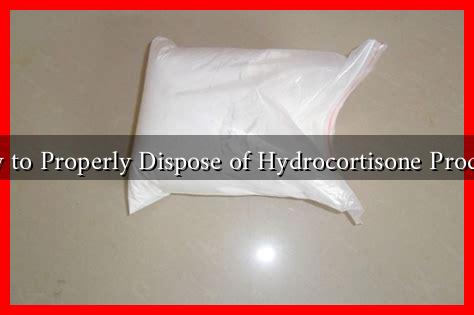-
Table of Contents
How to Properly Dispose of Hydrocortisone Products
Hydrocortisone is a corticosteroid commonly used to treat various skin conditions, allergies, and inflammatory disorders. While effective, improper disposal of hydrocortisone products can pose environmental risks and health hazards. This article will guide you through the proper disposal methods for hydrocortisone products, ensuring safety for both individuals and the environment.
Understanding Hydrocortisone Products
Hydrocortisone is available in various forms, including creams, ointments, lotions, and oral tablets. Each form has specific uses and potential side effects. For instance, topical hydrocortisone is often used for conditions like eczema and psoriasis, while oral forms may be prescribed for more systemic issues.
Why Proper Disposal is Important
Improper disposal of hydrocortisone products can lead to:
- Environmental Contamination: Flushing medications down the toilet or pouring them down the drain can contaminate water supplies.
- Health Risks: Unused or expired medications can be ingested by children or pets, leading to accidental overdoses.
- Drug Abuse Potential: Some medications can be misused if not disposed of properly.
Steps for Proper Disposal of Hydrocortisone Products
To ensure safe disposal of hydrocortisone products, follow these steps:
1. Check for Local Guidelines
Before disposing of any medication, check local regulations and guidelines. Many communities have specific programs for medication disposal. The U.S. Drug Enforcement Administration (DEA) provides resources for safe disposal locations, which can be found on their website.
2. Follow the FDA Guidelines
The Food and Drug Administration (FDA) recommends the following methods for disposing of hydrocortisone products:
- Take-Back Programs: Participate in drug take-back events or utilize permanent collection sites.
- Household Trash: If no take-back options are available, you can dispose of hydrocortisone products in the household trash by following these steps:
- Mix the medication with an undesirable substance (e.g., used coffee grounds, dirt, or cat litter).
- Place the mixture in a sealed plastic bag or container to prevent leakage.
- Throw the container in the household trash.
- Remove any personal information from the medication container before disposal.
3. Flushing Medications
While flushing is generally discouraged, the FDA has identified certain medications that can be safely flushed to prevent accidental ingestion. However, hydrocortisone is not typically included in this list. Always check the latest FDA guidelines before considering this method.
Case Studies and Statistics
According to a study published in the journal Environmental Science & Technology, pharmaceuticals are increasingly found in water systems, with over 80% of U.S. rivers and streams containing traces of medications. This highlights the importance of proper disposal methods to mitigate environmental impact.
Additionally, the National Institute on Drug Abuse reports that prescription medications are a leading cause of accidental overdoses, particularly among children. Proper disposal can significantly reduce these risks.
Conclusion
Proper disposal of hydrocortisone products is crucial for protecting both public health and the environment. By following local guidelines, utilizing take-back programs, and adhering to FDA recommendations, individuals can ensure that these medications do not pose a risk to others. Remember, when in doubt, consult your pharmacist or local waste management authorities for guidance on safe disposal practices.
For more information on medication disposal, visit the FDA’s official website.


